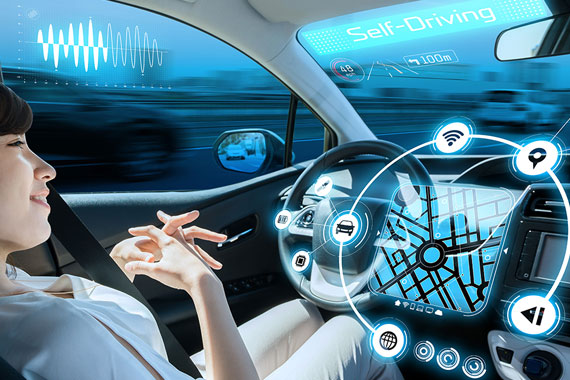Engineers have been attempting prototypes of self-driving cars for decades. The idea behind it is really simple: Outfit a car with cameras that can track all the objects around it and have the car react if it’s about to steer into one. Teach in-car computers the rules of the road and set them loose to navigate to their own destination.


This simple description elides a whole lot of complexity. Driving is one of the more complicated activities humans routinely do. Following a list of rules of the road isn’t enough to drive as well as a human does, because we do things like make eye contact with others to confirm who has the right of way, react to weather conditions, and otherwise make judgment calls that are difficult to encode in hard-and-fast rules.
John Krafcik, CEO of Waymo, presents a self-driving car at Wed Summit in Lisbon, Portugal, on November 7, 2017.
And even the simple parts of driving — like tracking the objects around a car on the road — are actually much trickier than they sound. Take Google’s sister company Waymo, the industry leader in self-driving cars. Waymo’s cars, which are fairly typical of other self-driving cars, use high-resolution cameras and lidar (light detection and ranging), a way of estimating distances to objects by bouncing light and sound off things.
The car’s computers combine all of this to build a picture of where other cars, cyclists, pedestrians, and obstacles are and where they’re moving. For this part, lots of training data is needed — that is, the car has to draw on millions of miles of driving data that Waymo has collected to form expectations about how other objects might move. It’s hard to get enough training data on the road, so the cars also train based on simulation data — but engineers have to be sure that their AI systems will generalize correctly from the simulation data to the real world.
That’s far from a complete description of the systems at work when a self-driving car is on the road. But it illustrates an important principle to keep in mind when wondering where our self-driving cars are: Even the “easy” things turn out to hide surprising complexity.
Under the influence of self-driving, many industries have been rapidly developed. As connectors are necessary for system equipment, the demand will also increase.Yeahui is a connector supplier with 11 years of experience in developing high quality connectors and wiring harnesses. wo have many types of products, including obd connector, circular connector, agricultural connector and so on.We can meet the requirements of various customers. Feel free to learn more about connectors or buy our connectors,looking forward to your message.
More about self-driving(How 5G and IoT will affect the auto industry).


没有评论:
发表评论